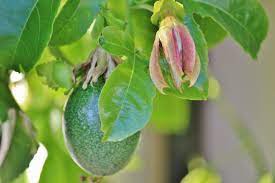
Firstly, introducing Auscrops, a wonderful market vending company bridging farmers and customers together through market vendors. Click here to find out more about Passion Fruit Tree as well fruit and vegetable offers.
Passion Fruit Tree – All About
Passion fruit trees are a type of vine that produces a delicious, tangy fruit. The fruit often used to make juices, jams, and desserts. Passion fruit trees are native to tropical regions and require warm weather and humid conditions to thrive. Although they can be difficult to grow in some areas, passion fruit trees are generally low-maintenance and easy to care for. Keep reading to learn more about passion fruit trees and how to grow them.
Passion Fruit Tree History and Origin
Passion fruit trees are native to tropical regions of South America, such as Brazil and Peru. They were first introduced to Europe in the 1600s by Spanish explorers. Passion fruit trees quickly became popular in European gardens due to their beautiful flowers and delicious fruits. The vines also used as ornamental plants in many homes and public spaces.
Passion fruit trees were introduced to North America in the 1800s. They were initially grown in Florida and California but soon spread to other warm climates, such as Hawaii and Puerto Rico. Passionfruit vines can now be found growing in many tropical regions around the world.
Description
Passionfruit vines are fast-growing plants that can reach up to 30 feet in length. The leaves are dark green and heart-shaped with serrated edges. The flowers are white or purple and have a distinctive aroma. The fruits are oval or spherical shaped and vary in color from yellow to purple. Passion fruits have a juicy pulp that is full of seeds.
How to Grow Passion Fruit Trees
Passionfruit vines need warm weather and high humidity levels to grow properly. They should planted in an area that receives full sun for at least six hours per day. The soil should be well-draining but moist. Passionfruit vines grown from seedlings or cuttings.
Passionfruit vines should as well fertilized regularly during the growing season. A balanced fertilizer should apply every two weeks during the spring and summer months. Passionfruit vines should as well watered regularly, especially during dry periods. The soil should be kept moist but not soggy.
Pruning is essential for preventing passionfruit vines from becoming overgrown or unruly. Vines should pruned back after they have produced fruits. This will encourage the plant to produce more flowers and fruits the following season.
Conclusion:
Passionfruit trees are beautiful plants that produce delicious, tangy fruits. The fruits used to make juices, jams, desserts, and more! Passionfruit trees as well native to tropical regions but also grown in some subtropical areas with warm weather conditions.
Click here to read similar articles.
 Français
Français 











